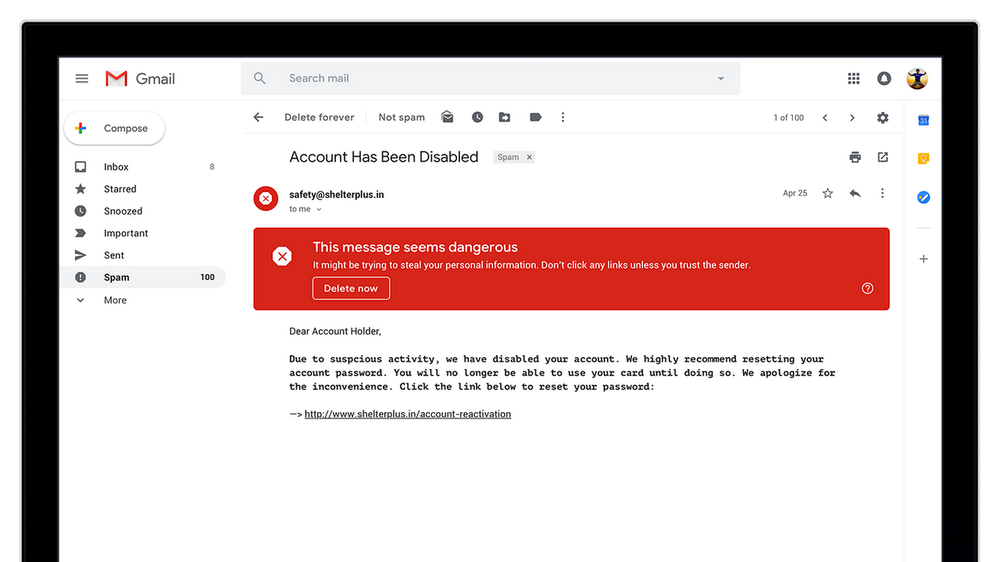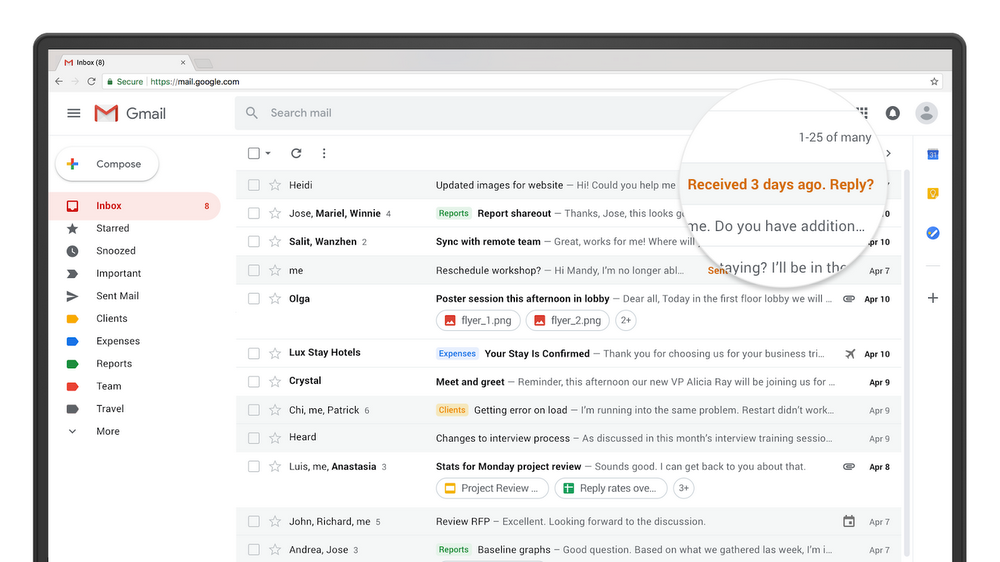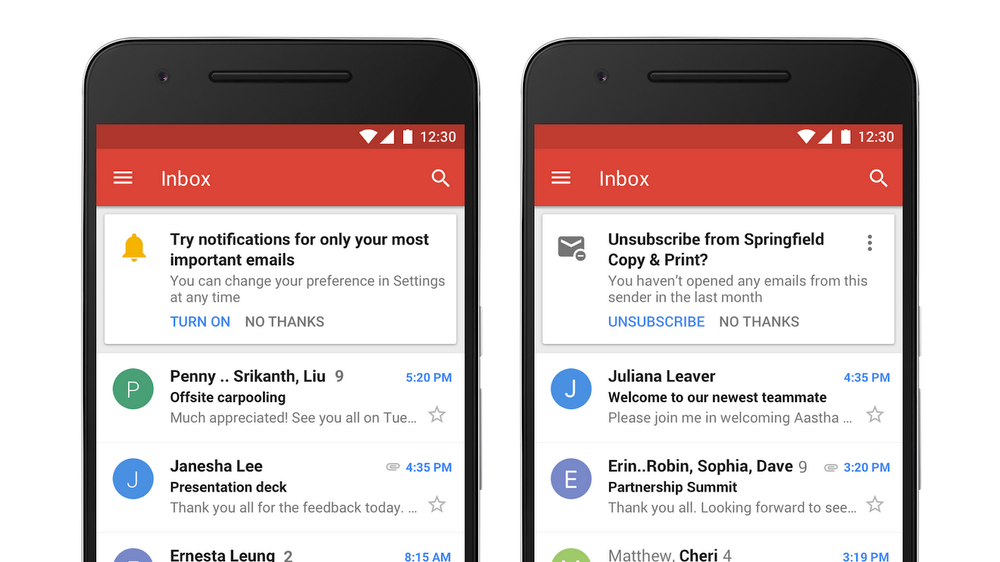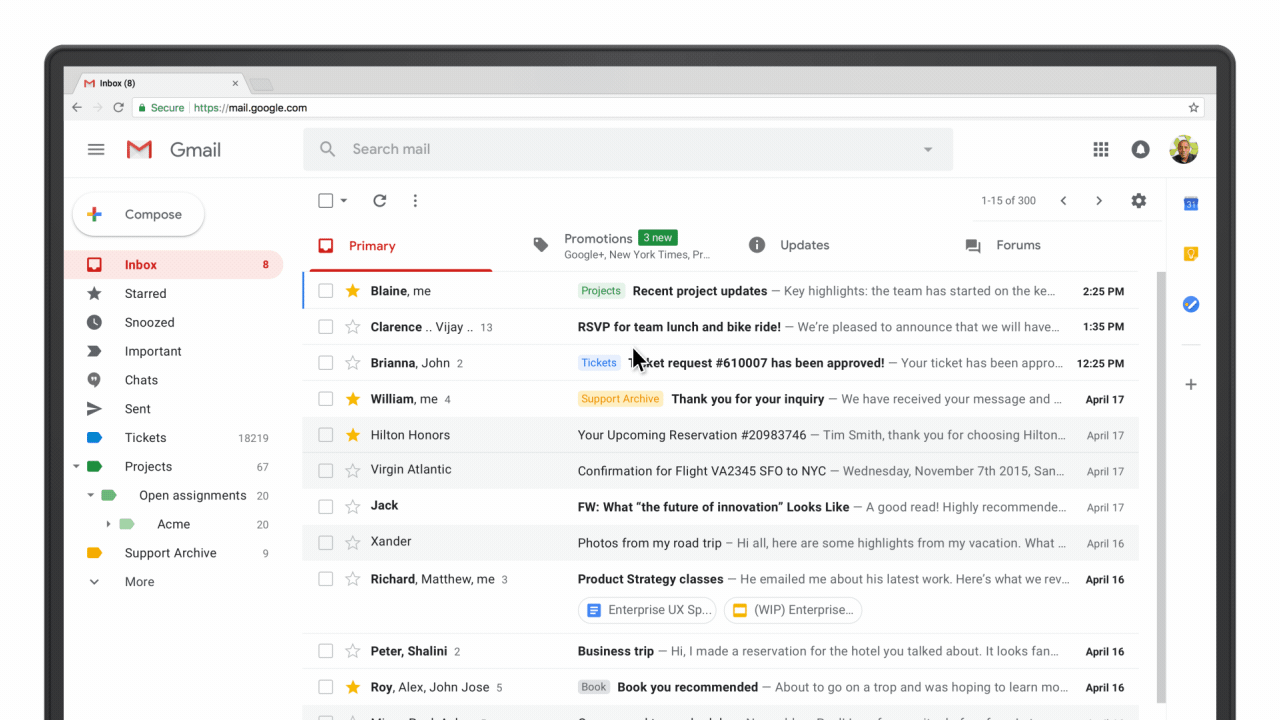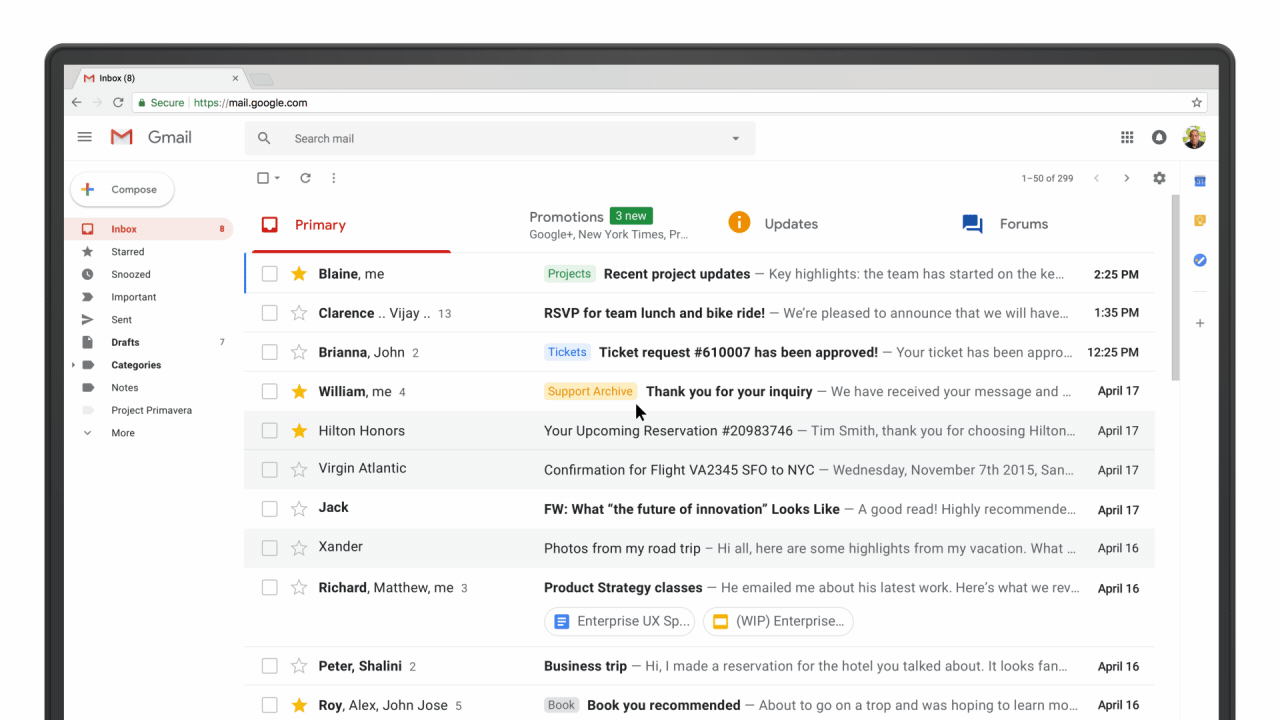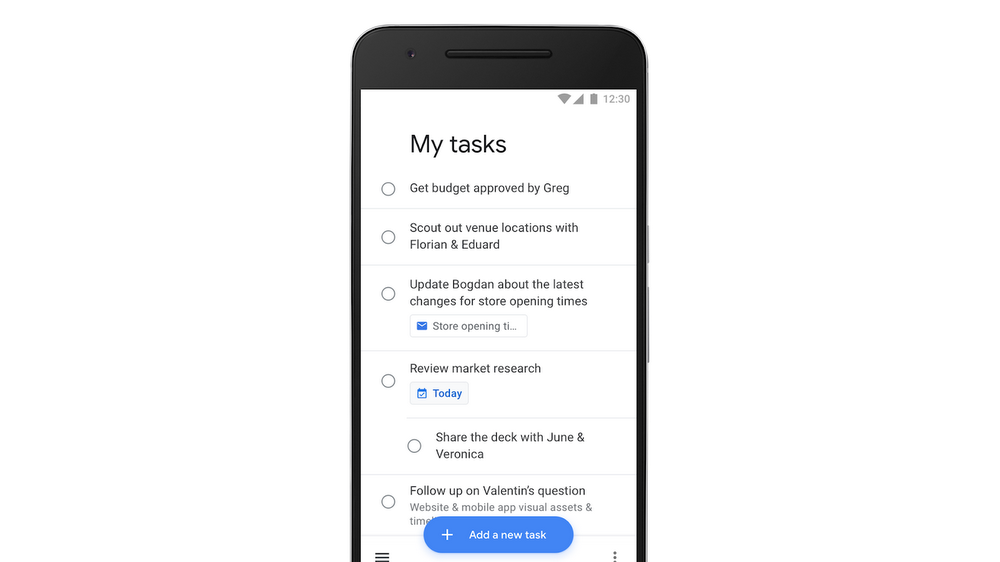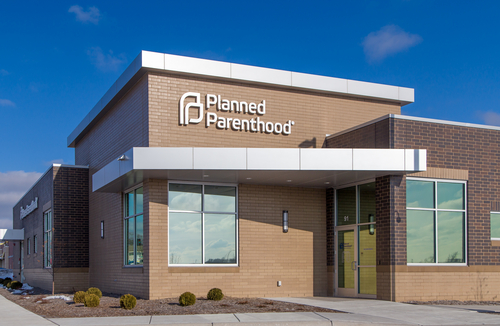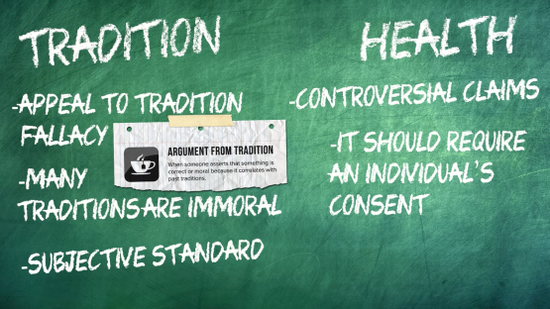
The all-star food writer Kenji Lopez-Alt decided to open his own restaurant. Then came kitchen snafus, disastrously clogged toilets, and long days away from his young daughter. (Photo: Max Pixel)
Our latest Freakonomics Radio episode is called “Why You Shouldn’t Open a Restaurant.” (You can subscribe to the podcast at Apple Podcasts, Stitcher, or elsewhere, get the RSS feed, or listen via the media player above.)
Kenji Lopez-Alt became a rock star of the food world by bringing science into the kitchen in a way that everyday cooks can appreciate. Then he dared to start his own restaurant — and discovered problems that even science can’t solve.
Below is a transcript of the episode, modified for your reading pleasure. For more information on the people and ideas in the episode, see the links at the bottom of this post.
* * *
Some people just can’t leave well enough alone. Consider, for instance, the case of the famous food writer, the one who used the scientific method to take apart everything we know about cooking and put it back together.
Kenji LÓPEZ-ALT: If you use vodka in place of some of the water in your pie crust, you end up with a dough that is much flakier and much lighter.
He investigated whether the key ingredient in New York pizza really is the water.
LÓPEZ-ALT: So I did a full double-blind experiment where I got water — starting with perfectly distilled water and up to various levels of dissolved solids inside the water. And what we basically ended up finding was the water makes almost no difference compared to other variables in the dough.
He found that the secret to General Tso’s chicken lay in geometry.
LÓPEZ-ALT: The geometry of food is important because one of the big things is surface-area-to-volume ratio.
And he explored the relationship between meat and salt; he proved why it’s important to salt a hamburger at the last minute, on the surface of the meat:
LOPEZ-ALT: We rented a baseball pitching machine that would throw hamburgers at the wall at 45 miles per hour. You’ll see that salted hamburger kind of bounces off the wall like a rubber ball, whereas the burger that has salt only on the outside kind of splatters.
This was the man who finally brought science into the kitchen in a way that non-scientists could appreciate. It helped that his work was fun, not preachy, and delicious. We interviewed him a while back, for an episode called “Food + Science = Victory!”
LÓPEZ-ALT: I think a lot of people think of science as sort of the opposite of tradition or the opposite of natural. And really it’s not.
He had just published his first cookbook, a massive thing called The Food Lab, which went on to win a James Beard Award. His reputation and reach only grew. But then, something else beckoned. Was it opportunity — or a trap?
LOPEZ-ALT: It’s that temptation you can’t resist.
Today on Freakonomics Radio: the food writer who flew too close to the flame.
LOPEZ-ALT: My name is James Kenji Lopez-Alt. I am a food writer who also happens to run a restaurant right now.
And everything’s been going just great, hasn’t it?
LOPEZ-ALT: “These problems are insurmountable, like how the f— are we going to fix this?”
* * *
Kenji Lopez-Alt grew up in New York, in a family of scientists, and went off to M.I.T. to study biology. He got a little bored, maybe burnt-out, and during the summers started working in restaurant kitchens in Boston. After college, he worked in an architecture firm for a bit.
LOPEZ-ALT: For a few months, half a year maybe.
And then back to restaurant kitchens.
LOPEZ-ALT: My very first restaurant job was at a place called Fire and Ice. It’s a Mongolian grill, so I was a knight of the round grill. I stood in the middle of a giant cast iron grill and cooked stir-fried food for people, and flipped asparagus tips into the air and stuff.
Over the next several years, he worked in a series of higher-end restaurants in Boston.
LOPEZ-ALT: After that, that was the end of my culinary career, or my cooking career.
He began building a career as a food writer, at Cook’s Illustrated and America’s Test Kitchen. Then, on the food site Serious Eats, he started a column called The Food Lab. He wasn’t expecting to turn into a food-writing rock star.
LOPEZ-ALT: I absolutely wasn’t expecting it. I was a freelance writer living in a one-bedroom apartment with no windows in Brooklyn at the time.
DUBNER: Now, after doing all that and having that platform and enjoying it, what made you think it was a good idea to not only get back into the restaurant business, but open your own restaurant?
LOPEZ-ALT: It’s always that temptation you can’t resist. It’s like, “Oh, what if I just went back and do cooking for a little while? Would I be able to do this?” So, I had a daughter. She’s 17 months old now.
DUBNER: Congratulations.
LOPEZ-ALT: Thank you. And when she was born, my wife and I decided that she would continue to work, and I would be the at-home parent. So I’ve been a stay-at-home dad for the last 17 months. And about six months into that, I was approached by some friends of friends who owned a bar in San Mateo, near where we live. And they were interested in opening up a beer hall and they were looking for a chef partner. And so I thought this might be something fun I could do in my spare time. Which, you don’t have too much spare time with a baby on your hands, but I thought this could be something fun and this is a good opportunity, relatively low-risk. Mainly it was because my wife and I sort of longed for a place like this in San Mateo, a family-friendly, casual, upscale place. And that was the concept that they were working on. So it seemed perfect for me.
And initially I thought my involvement would be relatively minimal. I would work on some menus. I would lend my name to the menu. What was actually really surprising to me was — when I first signed on with them, I sent a short little tweet saying, “Hey, this is happening, I’m opening a restaurant,” something like that. Eater picked it up. A bunch of other publications picked it up. And then all of a sudden it became not, “Kenji Lopez-Alt is partnering with these two guys who are opening a restaurant.” What it became was, “Kenji Lopez-Alt is opening a restaurant.” And then I was like, “Oh man, I guess I’m really going to get sucked into this.”
DUBNER: Okay, so the restaurant is called Wursthall. So, first of all, for those who haven’t been to San Mateo, California, just give us a quick sense of the vibe of the place, and then we’ll get into the restaurant and why the choices were made to have a German beer hall with sausages.
LOPEZ-ALT: Well, San Mateo is a city that’s basically dead center between San Francisco and Silicon Valley. My wife works at Google and she works down in Silicon Valley. We initially moved up into the city and her commute was crazy. So we’re like, “All right we’ll move down to San Mateo.” And if you look at the real estate curve: very expensive everywhere, but extremely expensive in San Francisco, extremely expensive in Silicon Valley. And in San Mateo and a couple of the surrounding cities, there’s a small dip, so we were like, “Alright, that’s where we can afford to live.” And that’s where my wife’s commute will be all right. I think there’s actually a lot of people in our situation there right now.
DUBNER: Why a German beer hall — why was that the right concept? Or why was that the concept they wanted?
LOPEZ-ALT: Well, it’s two factors. One of them is the space itself. We’re located in a really nice, old, historic building, lots of nice light, so it seemed very conducive to this beer-hall atmosphere. The other thing is that my partner Adam Simpson, he is really into beer. And finally, beer halls are kind of just popular right now. So it seemed like a concept that worked in the space, that worked with Adam’s knowledge-base, and it seemed to be something that was hot and lacking in the San Mateo area.
So far so good, right? So for everyone out there who’s thinking, “Hey, maybe I should open a restaurant” — we asked Kenji Lopez-Alt: “what’s the first step?”
LOPEZ-ALT: So, the first step to opening a restaurant is, don’t. Opening a restaurant is a series of putting out fires every single day. I mean, even once you’re open, it’s still a series of putting out fires. Step one: don’t.
DUBNER: Okay. So, can you walk us through the opening process? What kind of work goes into those preparatory weeks, months, I assume?
LOPEZ-ALT: So, the first step is, you have to have a reason for people to believe that you’re going to succeed and to give you money to do it. Because it’s not cheap to open a restaurant. And then from there it’s working with the architects and designers and doing all the build-out, which inevitably takes way more time than you expect. And for us we had this extra problem, because we’re in this really old building and the previous tenants and the landlord, they didn’t take the best care of the space.
But working back from my side, from the kitchen perspective: initially a lot of it was conceptualizing how German do we want to be? How California do we want to be? Because we knew we wanted to do both. Figuring out what the service style was going to be, and how customers are going to order. And really thinking to ourselves, “Alright, when people come in here, what are they coming in to do?” Initially, when Adam and my other partner, Tyson Mao — when they were thinking of a beer hall, they thought, “Right, this is going to be essentially a bar. Some people maybe come to have a nice meal, but most will be coming to drink and have some food on the side.” And that’s what the initial menu is designed around: a selection of sausages, a couple of sandwiches, some appetizers to share.
So now he got to work creating a menu.
LOPEZ-ALT: I had developed the initial opening menu on my own in my home kitchen before we had even hired any sort of kitchen staff. And I’m pretty methodical, so I had a recipe booklet written out, everything done in metric units, something that anybody could look at and replicate. Part of the idea was because it’s going to be relatively low-priced and high-volume, the kitchen has to be able to run itself, even without very minute oversight.
DUBNER: What about the sausage-making itself? That’s a big component. Can you just talk about how involved you were in the design and execution, and maybe experimentation, and figuring out how to not only make the sausages that you wanted, but how they were going to be prepared?
LOPEZ-ALT: Yeah, from the start, we knew that we weren’t going to be able to make the sausages in-house, because we didn’t have the facilities. So in order to make a large volume of sausage, you need to have a dedicated refrigerated room, where you can grind and mix and stuff and everything, because if sausage mixture gets too warm while you’re forming it, it doesn’t bind properly, and your sausages end up crumbly and dry. It was literally physically impossible for us to make sausages in-house. So very early on we decided, “All right, we’re going to have to find some partners to work with who can execute our ideas at a level of quality and volume that we’re happy with.”
DUBNER: Is it an easy thing to find, someone who can handle that kind of quality and especially volume?
LOPEZ-ALT: No. I mean the sausage part was mainly me going to every single sausage maker I could find in the Bay Area. We did want to keep it local. We visited many, many butchers and sausage makers, and there are many, many bad sausages around. Sausage-making is a non-trivial skill. You think, “Okay it’s just meat and fat, spiced, ground up, stuffed into a casing. How hard could it be?” But it’s one of these things where the minutiae of the technique can make a huge difference in the quality of the final product. It mainly comes down to the binding element, making sure that you have the right level of salt, and that the meat has been salted long enough that the proteins start to dissolve before you mix it. Making sure that you mix it right, and that you have the right ratio of fat to lean. And then also making sure that it stays chilled through the entire process.
And if any one of those things is off, your sausage doesn’t bind properly. And that’s what you find is the problem with most mediocre sausages. They could be flavored very well, they could be crazy and interesting, but if they’re not mixed properly they crumble instead of having that nice, juicy, snappy texture that I look for in a sausage. And so finding someone who can do that was hard.
There was also the consideration of creating a sausage restaurant that could be vegan-friendly.
LOPEZ-ALT: So one of my goals from the beginning was: vegan items on the menu that aren’t vegan by omission, they’re just vegan by default, and they’re delicious. So we have a number of things like that, but the one that I was really excited about is a vegan doner kebab. And for that I worked with a company called Impossible Meats, they make a vegan ground-meat blend mostly out of wheat protein, but they add heme, which is a lot of what gives red meat its irony, bloody flavor. But it can also be derived from plant sources. It’s by far the best faux meat available. And so what we do is we spice it with Turkish spices — so cumin, urfa biber chilies, sumac.
And then we serve it as a — well, initially we were reforming it into a cylinder and doing it in front of one of those doner kebab spits that spins around, and you shave it off. But the fat in this stuff is coconut oil, and coconut oil melts at a slightly lower temperature than animal fat does, so the fat would end up melting out of it, and it would eventually just crumble off the spit. So that didn’t end up working. It would’ve been so cool if we could get that to work. Now we’re just forming it straight into hamburger-style patties, so all the flavor is there.
DUBNER: Okay, so you talked about the food and the building, etc. What about the people? How involved were you in hiring and training up the kitchen and front of house?
LOPEZ-ALT: I was very involved in back of the house, and finding good people is by far the hardest thing. So, when you’re living in a place like New York or San Francisco, where the cost of living is so high, finding great people is very hard. Even finding remotely reliable people. Even before we opened, when we were training staff, we must have lost probably 50 percent over the course of a few weeks.
DUBNER: Wow.
LOPEZ-ALT: Which is not abnormal. One day we’re there and two of our cooks don’t show up. What do we do? One of them was on a bender and the other one was just a no-show. But then, luckily, the restaurant down the street, all the cooks there showed up that morning and the manager said, “We’re closing, and you don’t have a job anymore.” So, suddenly we had 12 cooks just walk up to the front door saying, “Hey, can we have a job?” So there’s never really a shortage of résumés and applicants, it’s finding reliable people that’s hard. What I’ve discovered in my years as a cook — and it played out exactly as expected here — was that it’s much better to hire people who give a s—, even if they have no previous experience or skills, than to hire someone who has a great résumé who doesn’t really understand the concept.
Our No. 1 kitchen hire is this guy Erik Drobey, who is a career changer, he was in his 40s, he worked in an office job, always loved cooking on the side, was a Food Lab follower. He stopped by my house once to give me some sausages and sauerkraut he made because he was so proud of them. And they were great, I thought they were great. And then he said, “Hey, I think I’ve decided I want to be a cook. Would you give me a shot?” I’m like, “Absolutely.” Finding people who really care. That’s the key. Because you can always teach people skills, but you can’t teach people to give a s—.
DUBNER: And what about front of the house?
LOPEZ-ALT: Front of the house is actually probably even a little bit harder at the start, because you have to really dangle this carrot in front of them because during training and during the first month that we were doing friends and family meals, people are working and they’re getting paid, but they’re not getting the same tips that they would. And so they have to realize, “Okay, I’m putting in this work now. So in a month I’ll be making much more money.” But it’s hard to find people who are willing to think about that.
DUBNER: So shortly before opening, you tweeted — in all caps, by the way — “Opening a restaurant is insane. And I don’t know why anyone in their right mind would choose to do it.” So what’s going on in the weeks and days just before opening?
LOPEZ-ALT: I can tell you what was in my head when that tweet went out. It was not actually related directly to the restaurant itself, it was more about its toll on my personal life, and particularly my family life and my marriage, because a restaurant is a harsh mistress. During those three months I was in there, I would wake up, take my daughter to daycare, go to the restaurant from 9:00 a.m. until 4:00 p.m., go pick up my daughter from daycare, bring her home, put her to bed, and then go back to the restaurant from 8:00 p.m. until 1:00 a.m. It had been two-and-a-half months where I had been basically never at home. I saw my daughter for a few hours a day, but I basically never saw my wife. We lost the chance to sit down and talk together. The only time I ever saw her was when we were with our daughter, so we never really had any alone time, which is very difficult when you’re raising a child, to not be able to talk to your partner, not even have the time to talk about things related to raising the child. And the worst part of it was that no matter how well you plan, and you think to yourself, “Right, this is the amount of work I’m going to have to put into this restaurant, and I’m just going to say no after that,” it’s really hard to say no when there’s 40 people whose jobs rely on you making this a success.
Finally, Wursthall was ready for its soft opening — investors, friends and family.
LOPEZ-ALT: About 100 people, and everything was great. We had completely gutted the old bathrooms, retiled them in this beautiful blue tile, really nice wallpaper with these hand pen-and-ink-drawn animals and stuff. It was a really nice bathroom. And the first night we had 100 people in, the toilets backed up, stopped working. And we had to shut down the bathrooms. And as it turns out, the waste line leaving one of the toilets had never been repaired or replaced in probably decades and decades and had a huge sag in it. So we had to close for two weeks so that they can rip out all the tile we just put in, dig into the foundation, replace that. All of a sudden, we thought we were going to be ready to open the next week and now it’s like another two weeks and another 30 grand to fix the bathroom that we had never even considered might be a problem.
* * *
Kenji Lopez-Alt, rock star of the food-writing world, decided after years on the sidelines to get back into the restaurant business with a place called Wursthall, in San Mateo, California, which started out as a simple concept: a German beer hall serving nouveau-ish sausages.
LOPEZ-ALT: I was always one of these “I’d rather have influence and bring joy to people than have a lot of money” type-of-career people, you know? And if the money comes along with it, then that’s great as well. But I’d rather just be doing something I love.
DUBNER: Okay, so walk us through opening night, and I’m sure everything went exactly as it was planned, and everybody was thrilled, and it was perfect. Yes?
LOPEZ-ALT: Well, we had a sizable number of people in there and we were cooking food, people were ordering food, tickets were coming in, we were firing it. It was a disaster. Major, major disaster. Some people were waiting over an hour for their food. Some people never got their food. It’s the kind of night where we’re like, “These problems are insurmountable, how the f— are we going to fix this?” But we decided, “All right, we’ll focus on a couple of the big problems first.” When I tell them to you, they’re going to seem like stupid, small things. It’s like, “Well, why couldn’t you just do that?”
So, one of them was that we have sausages and you get your choice of topping. One of the problems was communicating to the cooks on the line. In case you’re not aware of how restaurant kitchens work, there’s a line, which is where all the stoves are, where the counters with the little cutting boards are, it’s where the cooks, the guys and girls are actually making the food. And then there’s a station called “expo,” the expediter, and the expediter’s job is to first of all act as a liaison between the front of the house and the back of the house. But, more importantly, the expediter’s job is to coordinate everybody in the back of the house so that dishes come out at the same time, so that everyone in the back of the house knows what they’re doing. So, essentially, they’re the general managing the army back there.
On opening night, we had all the toppings back on the line, and I was expediting, and I was just calling out, saying, “All right, hot Italian with speck and cherry-pepper relish. One bratwurst with sauerkraut.” And it’s a lot of information to take in when you have a full restaurant, there’s 100 people there, and you’re cooking say, 25, 30 sausages at a time, and each one has their own designated topping. It’s a lot of information for the person on the line actually cooking it and plating it to take in. And so every single sausage had this huge delay, where they maybe go out with the wrong topping on it and we’d have to re-fire it, or they would yell out and everything is really noisy, and we can’t hear each other.
And once you have these tiny little problems, that can lead to huge, huge backups, because the customers — they don’t care what problems you have back there. Once they’re seated, they want to start ordering food. And they don’t care that you already have a full board of tickets and that the grill is completely full. They don’t care that you screwed up one order and you have to re-fire it. Those tickets are just going to keep coming and coming and coming. So you have the ticket printer machine that’s spitting out these tickets constantly, and you’re constantly struggling to try and catch up with it. And that puts more and more stress on you. So you make more mistakes, the people on the line make more mistakes. And it can be these tiny little things that add to the likelihood of making a mistake that can throw a wrench in the entire operation, and that’s essentially what happened that first night.
So, the second night, what we did was we took those toppings, we took them off the line, and put them next to the expediter’s station, next to my station, so that all they had to remember was which sausages they were cooking. They would pass the sausages to me, right before I handed it to the server, I would put the topping on. I had the ticket right in front of me, it was easy for me to read it. And that smoothed things over unbelievably so. A couple of seconds of extra work on the cook’s part, it translated from a sausage taking over an hour to get to a customer, because there was this huge backlog of tickets, to customers getting their sausages in about eight minutes.
There was another major problem they discovered only on opening night.
LOPEZ-ALT: And it’s one that we didn’t resolve until relatively recently.
It had to do with the pretzels.
LOPEZ-ALT: So, I’m also partner at a bakery called Backhaus and they make all of our pretzels and all of our bread. Really wonderful pretzels, but we serve them hot. So we were trying to figure out, “How do we get these pretzels that were baked that morning and delivered to us, how do we serve them hot and fresh?” And the obvious thing is, “All right, well, when someone orders a pretzel, put it in the oven, let it get hot, and then we serve it.”
This was a problem in a couple different ways: one of them was that Backhaus, they were salting their pretzels before they came to us. And what happens with pretzel salt is that it draws out moisture from the pretzels, so after eight hours or so, some of the moisture from the pretzels beads up on the surface of the pretzels and then it leaves kind of a splotchy wet marks, which is not good, and the salt is all gone. So we’re like, “Okay, so we have to salt our pretzels,” so that’s adding another layer of stuff we have to do. And the only oven that we have back on the line is next to the fry station, and the fryer is extremely busy with potatoes and we also do a chicken schnitzel sandwich. Adding pretzels on top of that to him became very difficult. So, for the early nights, we were firing pretzels to-order in the oven. And that was another one of those things that seemed like it’s a thing that takes two seconds, but it just piled onto the likelihood that we were going to screw something up.
So what was the pretzel-salting solution?
LOPEZ-ALT: Well, we found a much more efficient way of salting them. So, one of the cooks had this idea to take a squeeze bottle, cut off the top until it was big enough that pretzel salt could flow through it. Now what we do is we just spray the pretzels and draw a line, trace the outline with the squeeze bottle, and that clears up all the space.
DUBNER: So what you just described, plainly these are things that most people eating at restaurants would never ever think about.
LOPEZ-ALT: And they shouldn’t have to think about it.
DUBNER: But you have to think about it. But, as you’re describing it, it strikes me that you being who you are, and the way that you like to work, and the way that you do take an empirical and scientific approach to food and cooking and so on, that you were driven to solve these problems and get it right. Is that often the difference between a restaurant that works and one that doesn’t, which is that you have to be driven to constantly adjust, solve problems like that, that are going to come up? Do most restaurants really try as hard as you just described?
LOPEZ-ALT: Most restaurants really try as hard. Any good chef cares deeply about the quality, and any good restaurant owner cares deeply about the quality of what they’re putting out. So I don’t think I’m unique in that regard at all. Me and my partners, Tyson and Adam, we have a lot of sit-down meetings where we analyze problems and try and solve them. So, maybe we do that a little bit more than other restaurants, but that’s my skill. I’ve worked for chefs that seem to have an innate skill to just be able to figure things out on the fly, or be able to work harder and faster to be able to solve those problems. People will attack those problems in different ways. But any good restaurant owner is going to recognize those problems and try and solve it in their own way.
DUBNER: I’m curious how much you pay attention to reviews of any sort. If you had opened a restaurant 10, certainly 20 years ago, there’s so much less feedback then, and now, some people feel swamped by it. Some people feel a lot of it is disingenuous. I know you said in the past that Yelp, in fact, this is from a tweet of yours: “Yelp is and has always been the worst place to look for decent reviews. Shady business practices, reviews by people who I know nothing about and have no reason to trust their opinion, even on the off chance they actually dined at the restaurant you’re rating.” So talk about that for a minute, your experience with Yelp and/or other online reviews.
LOPEZ-ALT: So, it’s difficult to gain value from them for me.
DUBNER: You mean as a consumer or a producer?
LOPEZ-ALT: As a consumer. To some degree, as a producer there is a little bit of value to it. But, especially if you start looking at trends and see, all right, people that are complaining, what are they complaining about? At the beginning when we opened, it was service. And that was some very legitimate feedback on that.
DUBNER: You didn’t need online reviews to know that was a problem, I gather, right?
LOPEZ-ALT: There’s very little that I’ve read, I’ve seen in Yelp, that we didn’t already realize was a problem. As a consumer of Yelp, I find Yelp useful as a map of what restaurants are around, but it’s hard to trust opinions. A very good professional review, you don’t necessarily have to agree with the reviewer’s point of view on what is good and what’s not, but if you have an idea of what they think is good, then they tell you whether this restaurant met those expectations, and then you can sort of gauge, “All right, well, do I agree with whether that’s good or not?” And that’s what a good restaurant review will do. Whereas on Yelp, it’s like someone, BasicUser12345, says “this restaurant was terrible, the potatoes sucked.” Well, I don’t know what you define as good potatoes, so how is that helpful to me?
DUBNER: But the problem is that everybody eats, right? So everybody considers themself a legitimate critic, which, you can’t totally discount that fact, can you?
LOPEZ-ALT: No, no you can’t. But at the end of the day, I’m involved in this project because I want to be, I want to have my name on it. I want to be proud of what we’re putting out. At some point you just have to stick to your guns and say, “This is what I believe is good. And I’m not going to change that just because some people say they disagree that it’s good.” And if your idea of what is good is so far off from what most people think is good, then maybe you’re in trouble and you’re going to go out of business. But I’m of the mind that I’d rather lose a little business and stick to what I believe is true than to just pander to everybody to try and make the most money, which is hard to explain to partners and investors. But at the end of the day, as a food writer, I think I do have a pretty good pulse of what people think is good.
DUBNER: Right. So overall on Yelp, Wursthall is doing pretty well. Averaging about three-and-a-half out of five stars. So let me read you one Yelp review and hear your response.
LOPEZ-ALT: Ok, I honestly haven’t looked at Yelp reviews since, like, the second month after we opened, so we’ll see, all right.
DUBNER: This is from just over a month ago. This is from Andrew R. He writes, “I was really disappointed. I expected more. Not that I had high expectations. They were modest, honestly. But it fell below that bar as well. For one, the service was not that great. For two, the food just isn’t that good. It’s okay. Like, you would eat it if you were hungry. But another sausage would probably satisfy you more. And I like a split-top bun because you can grill both sides like they do here. But when it’s split only halfway down there’s a lot of bread with no meat at the bottom. And that’s terrible. Cut that bun all the way down. It’ll be better. Trust me.” So, that’s Andrew R. What does Kenji L. say?
LOPEZ-ALT: Well, I’ll start from the end of it and work back. Believe it or not, we tested how far to cut the bun extensively before opening. And trust me when I say it’s not better to cut it too far, because the buns end up falling apart. It doesn’t stand right. That sounds all fair, I mean those seem like legitimate concerns. If I was at the restaurant, I would definitely love to talk to him and get a little more details about exactly what they were disappointed with. What is it about the sausage that you didn’t like? And to his point about sausages being not great: I fully admit sometimes, like any restaurant or any business, we have consistency issues now and then, and we work our best to make sure that those don’t happen. And every day gets better.
DUBNER: Here’s a professional review, this is Peter Lawrence Kane on SF Weekly. He writes, “The quality of the food is high, and it is consistent. The thing is, considering Lopez-Alt’s eminently well-deserved reputation for being a demystifier of culinary techniques, Wursthall falls a little short of the gosh-wow factor longtime fans might clamor for. Maybe that’s not entirely fair. After all, it’s exactly what it claims to be.” What’s your take on that, Kenji?
LOPEZ-ALT: So, I fully agree with that. This is again one of those things where it’s like what happened to the restaurant between the initial concept and between what customers expect. And, the initial concept was, “All right, we’re going to serve some damn good sausages. We’re going to make our own sauerkraut. It’s going to be good sauerkraut, but it’s still sausages and sauerkraut.” And there’s only so far that can go, as far as gosh-darn-wow factor. This is one of those things where the concept of the restaurant on paper turned out very different from what the restaurant is now. Once my name got attached to it and started bringing the media attention to it, it turns out people are coming there for dinner. They’re not coming there to drink. So, we started as a beer hall, but we’re not really a beer hall anymore. We’re a restaurant. And so that’s been one of the challenges since opening, coming to terms with that and realizing, “You know what? Some of the stuff we initially thought isn’t going to work, because customers are coming in with different expectations.” Any restaurant takes a while to find its legs. I think for us maybe it’s taking a little bit longer just because it was such a big shift from what we had initially planned compared to what customers perceive.
DUBNER: I see that — maybe yesterday, or within the last little while, you tweeted — a new menu item that’s starting soon. Maybe maybe it’s already started by now.
LOPEZ-ALT: Starting today. I was at the restaurant all morning training the staff and making making sure the cooks knew how it worked.
DUBNER: So, this is tomato mayo toast with grilled corn vinaigrette and a corn soup, paprika oil and shishito peppers. Yeah, so that’s not what I think of as beer-hall food. Was it the clientele who drove it primarily? In other words, were people confused when they came originally because they know your name and they think it was going to be more of a sit-down, knife-and-fork situation?
LOPEZ-ALT: I think that’s part of it. I definitely saw comments saying, like, “I expected the menu to be a little more Kenji than what it is.” Because it’s sausages, and I don’t write that much about sausages. I don’t eat that many sausages. I like them. And we cook them well, but it doesn’t exactly scream “Kenji” or “Food Lab” or whatever. So, yes, part of this revamping process has been, “How do we make this menu more me?”
DUBNER: So from what I’ve read, you own 12 percent of the restaurant and 20 percent of anything else with these partners?
LOPEZ-ALT: IThat’s ballpark correct.
DUBNER: Would you have had the same share of ownership had you just acted as a sort of consulting-founding chef, as opposed to roll up your sleeves fully involved?
LOPEZ-ALT: No. My partners are actually very understanding of the entire situation and the fact that I’ve now got more involved than I was planning on. Initially it was it was going to be basically just a fee plus a smaller percentage ownership.
DUBNER: The big question I have then really is, so far, do you feel overall that it’s worth it? Another way of putting that is, if I came to you tomorrow, Kenji, with an idea that you liked, an idea for a restaurant, maybe a site for a restaurant, and a potentially worthwhile partnership, what do you do? Do you succumb? Or do you refrain this time?
LOPEZ-ALT: I would say the restaurant on its own, in a bubble, detached from every other part of my life, was absolutely worth it. I don’t mind putting in hours and hours and hours of work even for little to no — I haven’t made any money off this restaurant yet, and I don’t plan on making any money for a while, until we pay off our investors. But we don’t live in a vacuum. So if someone came to me right now and asked me if I want to do this restaurant again, I would probably say no. Only because it cost me three months of being with my daughter. And that was a price that I wasn’t expecting to have to pay at the beginning, and one that made me deeply sad as it was happening, and also in retrospect. I don’t regret anything I did with the restaurant. I do regret how it affected my personal life and my family. But we learned those lessons.
DUBNER: Okay, final question. Let’s say that — maybe this is when your daughter is in school, when your daughter is in college even — but let’s say I come to you and I want you to work with me to open a new restaurant. What is the dream concept? Whether it’s cuisine or style or location. What is the restaurant that you absolutely would sacrifice again almost your entire life to do?
LOPEZ-ALT: It would be something much smaller than Wursthall. So, we’re opening a couple more Wursthalls in the coming years, but we’ve talked about other restaurant concepts as well, and if we were to work on something together again, we would do something much smaller. The idea I’ve been throwing out at them is a Korean fried chicken sandwich place, which is a recipe that I’ve done at a number of pop-ups, I think is extremely delicious, but it’s essentially chicken brined in kimchi juice and then done Nashville hot chicken style. But instead of the Nashville hot chicken oil that goes on there, we make a sauce with Korean chili flakes and a bunch of Korean flavors, and it’s super delicious and the kind of thing that I think would do well as a fast-casual thing. That would basically be it for me. I want to feed a lot of people and make them happy. I don’t want to open an ego restaurant. I don’t want people to come to worship at the altar of Kenji Lopez-Alt, come for this experience. I want a place that people say, “Hey, that’s a f— good sandwich. I’m going to have that once a week.”
Thanks to Kenji Lopez-Alt; his new restaurant, Wursthall, is in San Mateo, California. His book is called The Food Lab — and he’s currently working on a follow-up, so keep your eyes out for that.
Freakonomics Radio is produced by Stitcher and Dubner Productions. This episode was produced by Harry Huggins. Our staff also includes Alison Craiglow, Greg Rosalsky, Greg Rippin, Alvin Melathe, Zack Lapinski, and Andy Meisenheimer. The music you hear throughout the episode was composed by Luis Guerra. You can subscribe to Freakonomics Radio on Apple Podcasts, Stitcher, or wherever you get your podcasts.
Here’s where you can learn more about the people and ideas in this episode:
SOURCES
RESOURCES
-
The Food Lab by James Kenji Lopez-Alt (W. W. Norton & Company 2015).
EXTRA
The post Why You Shouldn’t Open a Restaurant (Ep. 347) appeared first on Freakonomics.
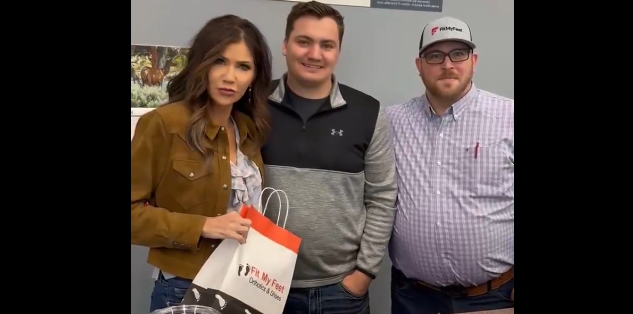
pic.twitter.com/RujfkjWPrc










 (@mcbc)
(@mcbc) 













